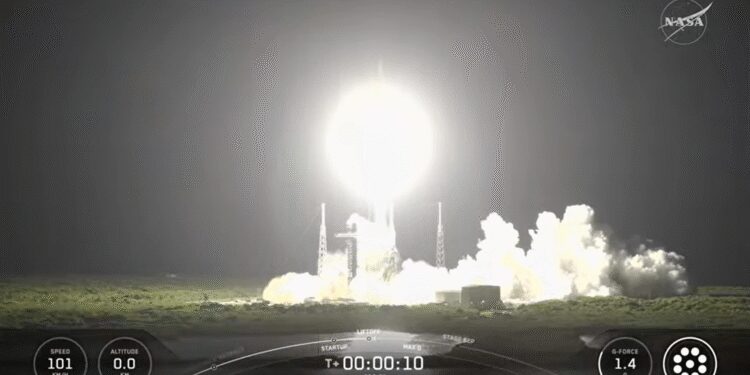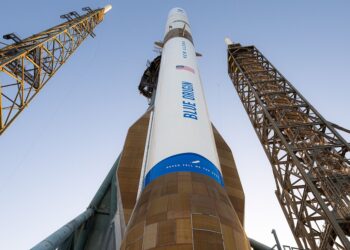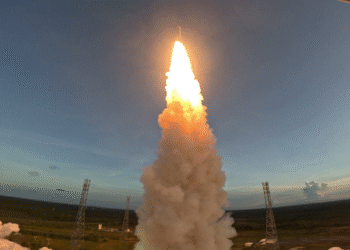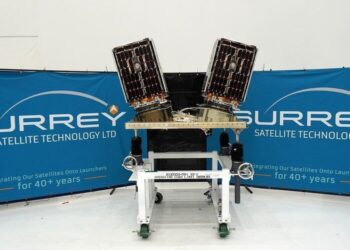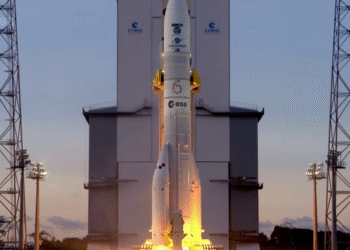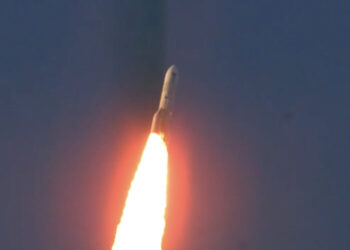Dragon CRS-33 is en route to the International Space Station after a predawn liftoff from Cape Canaveral, delivering more than 5,000 pounds of research, crew supplies, and station hardware that targets in-space manufacturing, bioprinting, and on-orbit propulsion tests.
Mission overview
The SpaceX Dragon spacecraft launched at 2:45 a.m. EDT on Aug. 24, 2025, atop a Falcon 9 from Space Launch Complex 40 at Cape Canaveral Space Force Station in Florida. Dragon is scheduled for an autonomous docking to the forward port of the station’s Harmony module at approximately 7:30 a.m. EDT on Monday, Aug. 25.
The mission, NASA’s 33rd contracted commercial resupply flight with SpaceX, supports ongoing ISS operations while advancing technologies aimed at increasing autonomy and resilience for future deep space expeditions.
Science and technology payloads
Key investigations aboard CRS-33 emphasize in-space manufacturing and bioprinting for both exploration and terrestrial applications:
- Metal 3D printing: Equipment and supplies to 3D print metal cubes in microgravity, informing process control, part quality, and materials behavior without gravity-driven convection or sedimentation.
- Medical implant materials: Materials to support 3D printing of medical implants with potential relevance to treatments for nerve damage, expanding the range of biomedical manufacturing use cases studied on orbit.
- Bioprinted liver tissue: Tissue models focused on blood vessel development in microgravity, enabling long-duration studies of vascularization that are challenging to conduct on Earth.
- Bone-forming stem cells: A study targeting bone loss prevention and recovery, addressing astronaut health risks during extended missions and contributing to osteoporosis research on Earth.
These payloads contribute to the station’s portfolio of hundreds of biology and biotechnology, physical sciences, and Earth and space science investigations.
Station reboost demonstration
CRS-33 carries a reboost hardware kit in Dragon’s unpressurized trunk to demonstrate altitude-maintenance burns for the ISS. The kit uses an independent propellant system to feed two Draco engines, leveraging existing spacecraft design elements while operating separately from Dragon’s standard systems.
Beginning in September, a series of planned burns through fall 2025 will characterize performance and operational procedures. A prior capability demonstration occurred during NASA’s SpaceX CRS-31 mission on Nov. 8, 2024. Expanding reboost options supports station orbital maintenance and introduces additional flexibility for traffic and propulsion planning.
Why it matters for exploration
In-space manufacturing and bioprinting aim to reduce dependency on Earth-based supply chains by enabling production of parts and medical resources on demand. Validating these processes in microgravity is relevant to lunar surface campaigns and future Mars missions, where logistics constraints favor local fabrication and regenerative medical solutions. Reboost demonstrations add propulsion redundancy that can be adapted to evolving station operations and future platforms.
What’s next
Dragon is expected to remain at the ISS until December, when it will depart with completed research and cargo and splash down off the coast of California for recovery and postflight analysis.
Additional mission and payload details are available in the NASA news release: NASA Science, Cargo Launch on 33rd SpaceX Resupply Mission to Station.


